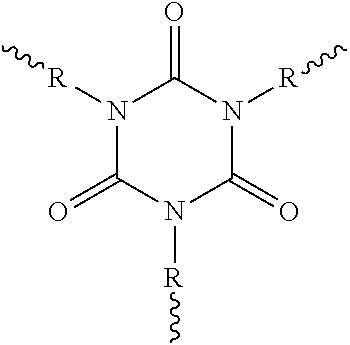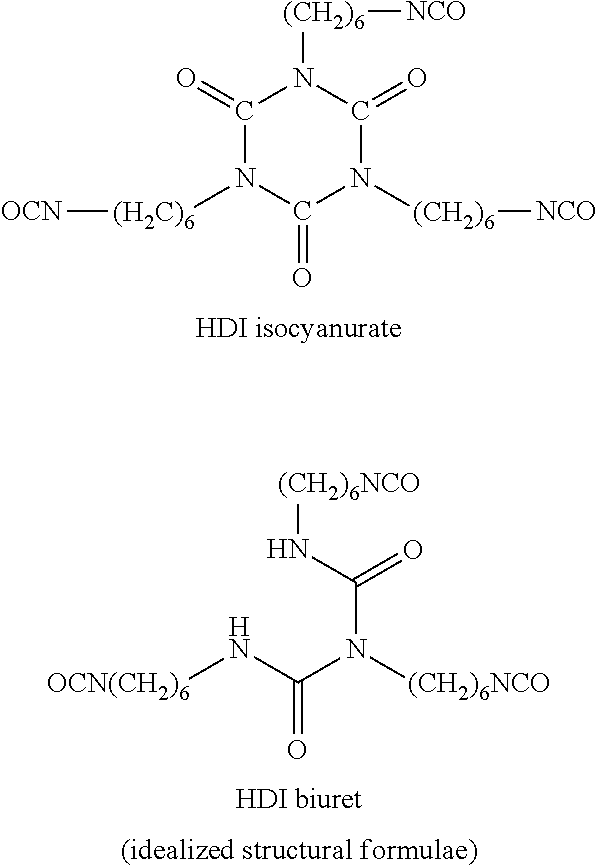Solids based on polyisocyanurate polymers produced under adiabatic conditions
a technology of polyisocyanurate and solids, which is applied in the field of process for producing solids made from polyisocyanurate plastics, can solve the problems of mdi polyisocyanurate-containing foam, multiple stages of the process for producing such foam, and high temperature applications, and achieves rapid and efficient polymerization, excellent chemical stability, and high conversion level
- Summary
- Abstract
- Description
- Claims
- Application Information
AI Technical Summary
Benefits of technology
Problems solved by technology
Method used
Image
Examples
examples
[0128]All percentages are based on weight, unless stated otherwise.
[0129]The pot life was measured after removal of a 1 ml sample from the freshly mixed reaction mixture in a Physica MCR 51 rheometer at RT. The pot life has been attained when the starting viscosity has doubled.
[0130]The NCO contents were determined by titrimetric means to DIN EN ISO 11909.
[0131]All the viscosity measurements were made with a Physica MCR 51 rheometer from Anton Paar Germany GmbH (DE) to DIN EN ISO 3219.
[0132]The densities of the starting polyisocyanates were determined to DIN EN ISO 2811, and those of the cured polyisocyanurate plastics to DIN EN ISO 1183-1.
[0133]The glass transition temperature Tg was determined by means of DSC (differential scanning calorimetry) with a Mettler DSC 12E (Mettler Toledo GmbH, Giessen, Germany) in accordance with DIN EN 61006. Calibration was effected via the melt onset temperature of indium and lead. 10 mg of substance were weighed out in standard capsules. The measur...
PUM
| Property | Measurement | Unit |
|---|---|---|
| temperature | aaaaa | aaaaa |
| temperature | aaaaa | aaaaa |
| density | aaaaa | aaaaa |
Abstract
Description
Claims
Application Information
 Login to View More
Login to View More - R&D
- Intellectual Property
- Life Sciences
- Materials
- Tech Scout
- Unparalleled Data Quality
- Higher Quality Content
- 60% Fewer Hallucinations
Browse by: Latest US Patents, China's latest patents, Technical Efficacy Thesaurus, Application Domain, Technology Topic, Popular Technical Reports.
© 2025 PatSnap. All rights reserved.Legal|Privacy policy|Modern Slavery Act Transparency Statement|Sitemap|About US| Contact US: help@patsnap.com



